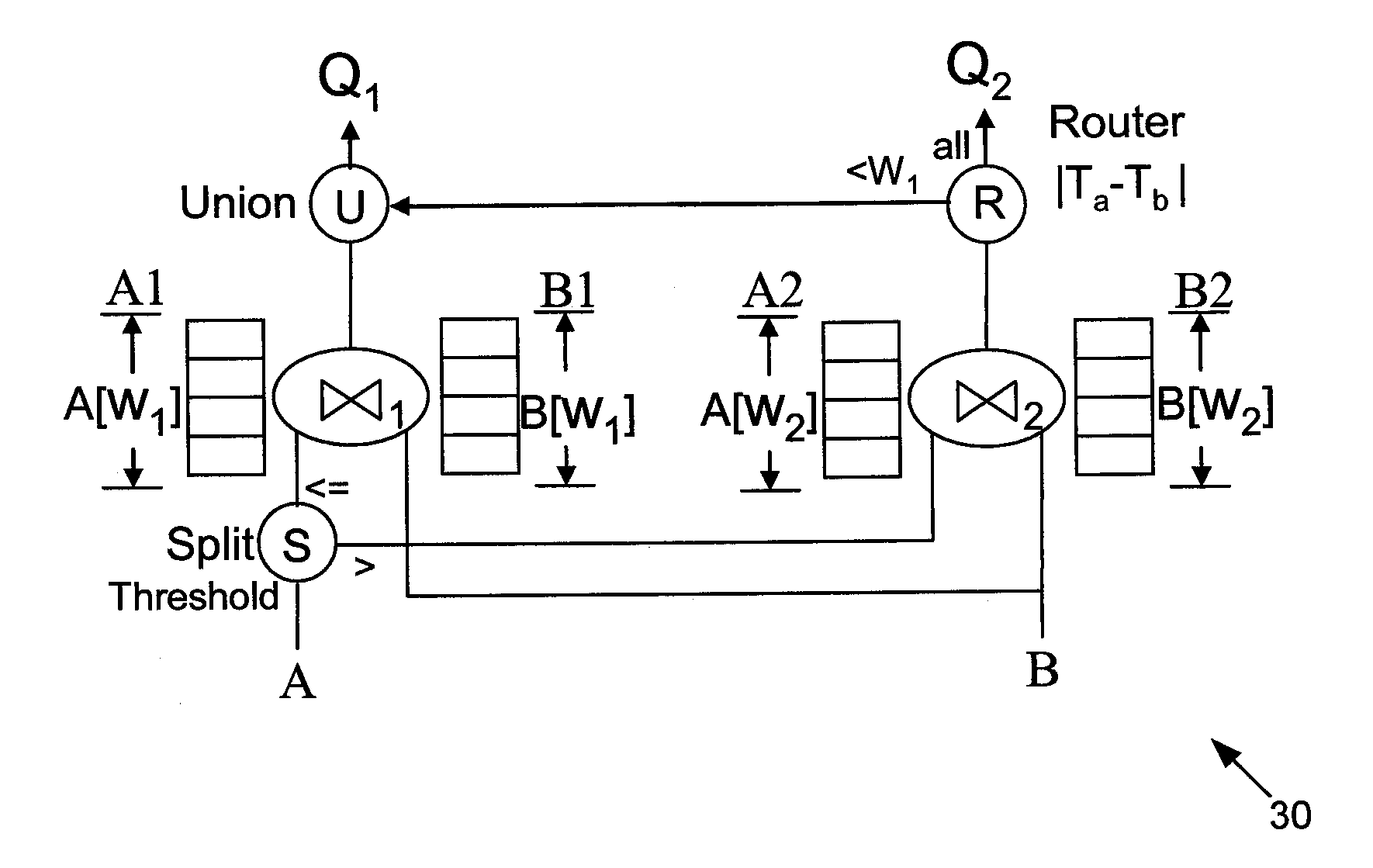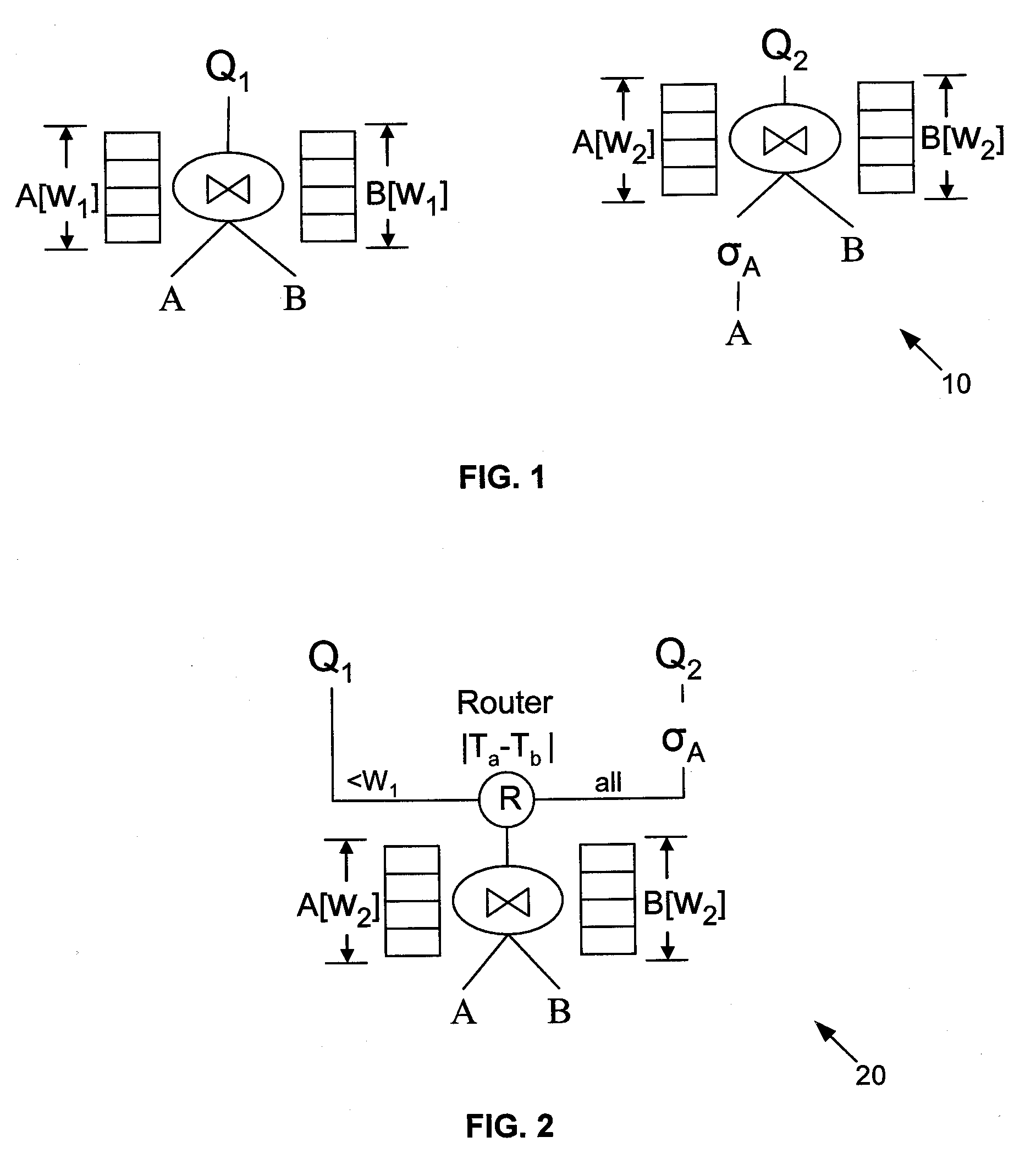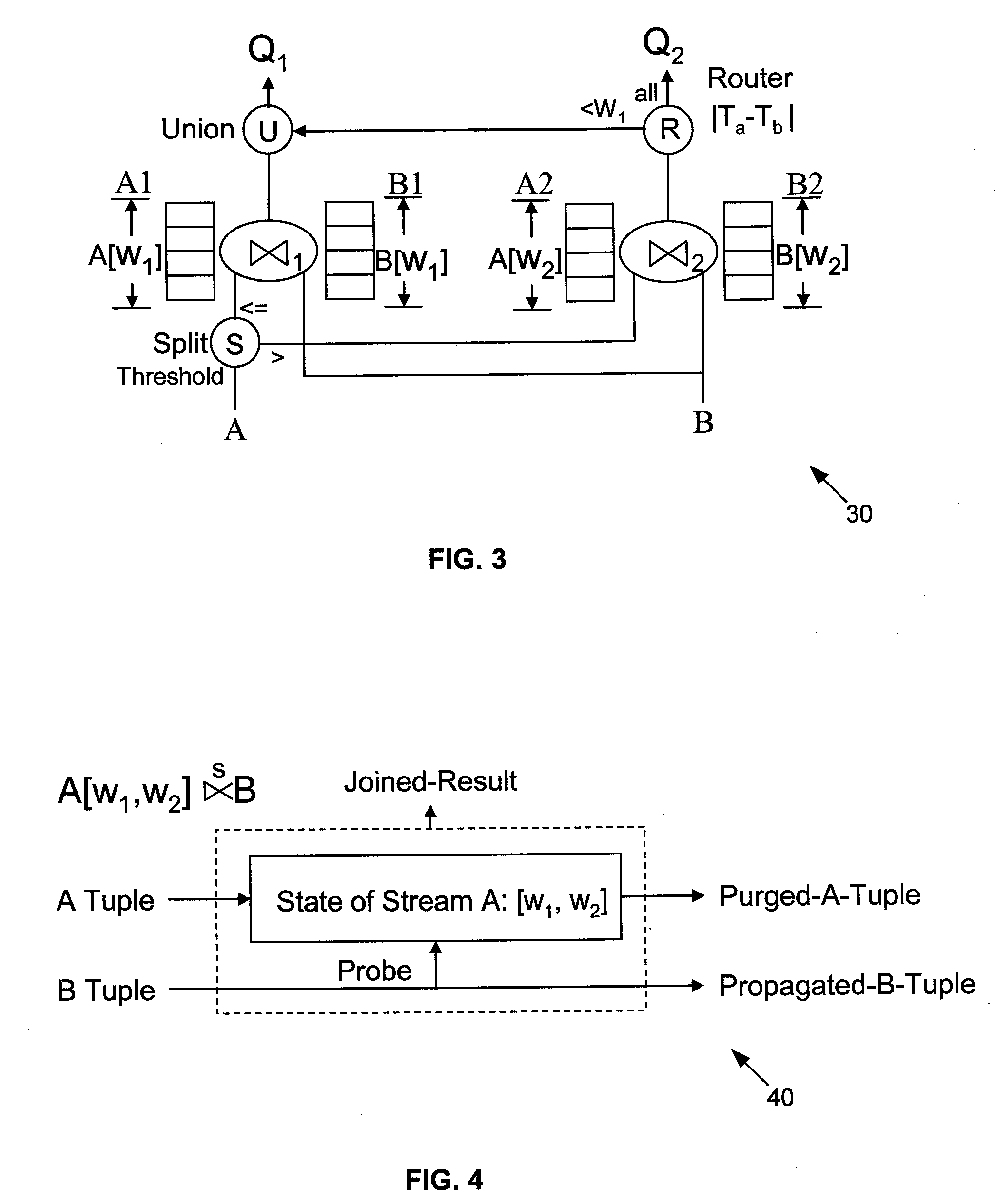Multi-Query Optimization of Window-Based Stream Queries
a multi-query, stream-based technology, applied in the field of data stream management systems, can solve the problems of not new to the literature of efficient sharing of window-based join operators, inability to meet the huge number of queries encountered in these applications, and inability to process each such compute-intensive query separately, so as to minimize the number of joins after state slicing, minimize memory consumption, and minimize the effect of cpu usag
- Summary
- Abstract
- Description
- Claims
- Application Information
AI Technical Summary
Benefits of technology
Problems solved by technology
Method used
Image
Examples
Embodiment Construction
[0045]To efficiently share computations of window-based join operators, the invention is a new method for sharing join queries with different window constraints and filters. The two key ideas of the invention are: state-slicing and pipelining. The window states of the shared join operator are sliced into fine-grained pieces based on the window constraints of individual queries. Multiple sliced window join operators, with each joining a distinct pair of sliced window states, can be formed. Selections now can be pushed down below any of the sliced window joins to avoid unnecessary computation and memory usage shown above. However, N2 joins appear to be needed to provide a complete answer if each of the window states were to be sliced into N pieces. The number of distinct join operators needed would then be too large for a data stream management system DSMS to hold for a large N. We This hurdle is overcome by elegantly pipelining the slices. This enables building a chain of only N slic...
PUM
 Login to View More
Login to View More Abstract
Description
Claims
Application Information
 Login to View More
Login to View More - R&D
- Intellectual Property
- Life Sciences
- Materials
- Tech Scout
- Unparalleled Data Quality
- Higher Quality Content
- 60% Fewer Hallucinations
Browse by: Latest US Patents, China's latest patents, Technical Efficacy Thesaurus, Application Domain, Technology Topic, Popular Technical Reports.
© 2025 PatSnap. All rights reserved.Legal|Privacy policy|Modern Slavery Act Transparency Statement|Sitemap|About US| Contact US: help@patsnap.com



